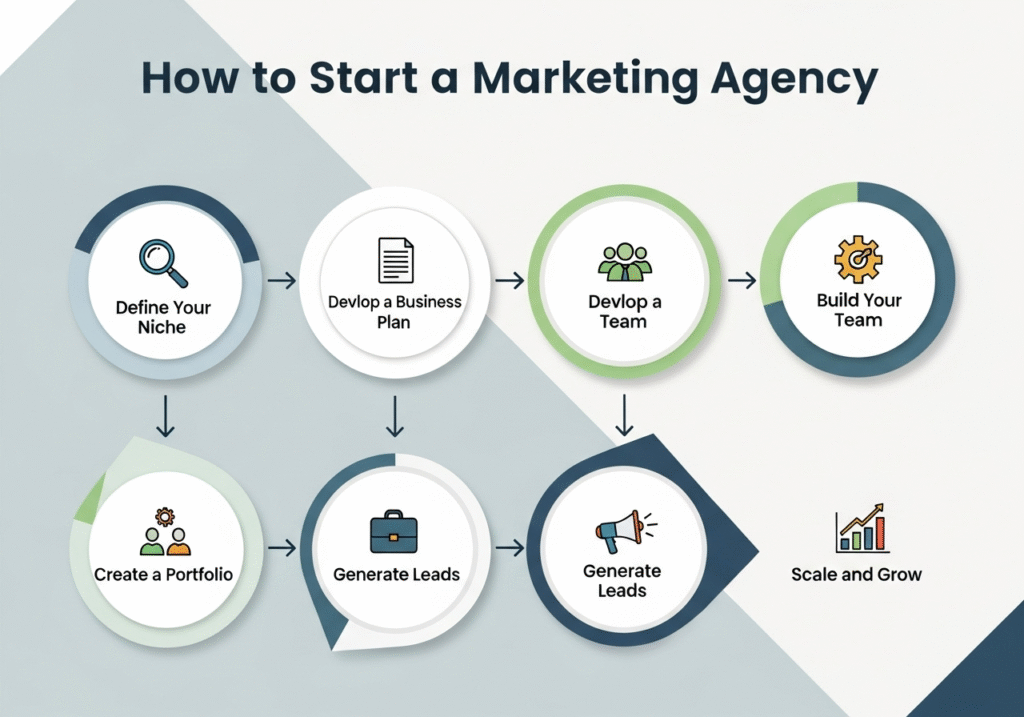Getting good SEO results isn’t about picking one strategy and going all-in. What do you need to balance when doing SEO? The answer involves juggling multiple priorities that sometimes pull in different directions.
This guide is for business owners, marketers, and SEO practitioners who want to build a sustainable search strategy that works in the real world. You’ll learn how to make smart trade-offs without sacrificing long-term success.
We’ll break down the key SEO balance factors you need to master, starting with how to blend technical SEO requirements with what your users actually want from your site.
You’ll also discover how to create content that both search engines and real people love, plus how to build authority through links while protecting your brand reputation. Finally, we’ll cover the tricky balance between chasing quick ranking wins and building something that lasts.
Technical SEO Foundation vs User Experience Optimization

Page Loading Speed Without Sacrificing Visual Appeal
Creating lightning-fast websites while maintaining visual appeal requires smart trade-offs and strategic optimization. The biggest challenge lies in keeping image quality high while reducing file sizes through modern formats like WebP or AVIF.
Lazy loading techniques help by only displaying images when users scroll to them, dramatically improving initial load times without removing visual elements. CSS and JavaScript optimization plays a crucial role in this balance.
Minifying code, removing unused styles, and implementing critical CSS inline can shave precious seconds off load times. However, avoid stripping away animations or interactive elements that enhance user engagement – instead, optimize their delivery through asynchronous loading and efficient code structure.
Modern browsers cache resources effectively, so leveraging browser caching for static assets like logos, fonts, and stylesheets creates repeat visitor advantages. Content delivery networks (CDN) distribute your visual content globally, ensuring fast loading regardless of user location while maintaining full design integrity.
Mobile Responsiveness Balanced with Desktop Functionality
Mobile-first design doesn’t mean desktop-last thinking. The key is creating responsive layouts that scale intelligently rather than simply shrinking desktop versions. Touch targets need adequate spacing on mobile while preserving detailed navigation menus for desktop users who expect comprehensive options.
Progressive enhancement works better than graceful degradation when balancing these experiences. Start with core mobile functionality, then layer additional features for larger screens.
This approach ensures mobile users get essential features quickly while desktop users enjoy enhanced capabilities without performance penalties. Consider different interaction patterns between devices.
Desktop users hover over elements for additional information, while mobile users tap and swipe. Design interfaces that work naturally for both interaction methods without compromising either experience.
| Device Type | Primary Considerations | Optimization Focus |
|---|---|---|
| Mobile | Touch interactions, limited screen space | Speed, essential features |
| Desktop | Detailed navigation, multi-tasking | Rich functionality, hover states |
| Tablet | Mixed interaction patterns | Flexible layouts, adaptive features |
Clean Code Structure That Supports Rich Content Features
Well-structured HTML provides the foundation for both search engine crawlers and complex content features. Semantic HTML tags like <article>, <section>, and <aside> create clear content hierarchy while enabling rich snippets and featured content displays.
Schema markup integration requires careful planning to avoid bloated code. Focus on the most impactful structured data types for your content – reviews, products, articles, or local business information. Clean implementation means choosing relevant schema types rather than marking up everything possible.
CSS organization through methodologies like BEM or atomic design keeps stylesheets maintainable while supporting dynamic content features. Modular CSS approaches allow for rich visual elements without creating technical debt that slows future development.
JavaScript frameworks can enhance user experience dramatically, but they need careful implementation. Server-side rendering or static generation helps search engines while preserving interactive features for users. The goal is seamless functionality that doesn’t create crawling obstacles.
Site Architecture For Both Crawlers and Human Navigation
Logical URL structures serve both audiences effectively. Descriptive paths like /products/laptops/gaming-laptops help users understand their location while providing clear signals to search engines about content relationships and hierarchy.
Internal linking strategies need dual purposes – guiding users to related content while distributing link equity throughout the site. Contextual links within content perform better than generic “click here” phrases, and they provide valuable context for both users and crawlers.
Breadcrumb navigation creates clear paths for users while establishing site hierarchy for search engines. XML sitemaps complement human-readable navigation by ensuring crawlers discover all important pages, especially those deeper in the site structure.
Information architecture planning involves creating user journey maps that align with crawler behavior patterns. Primary navigation should feature the most important pages prominently, while footer links and related content sections help distribute crawler attention to supporting pages. Category structures need to make sense from both a business logic and user intent perspective.
Content Quality vs Search Engine Requirements

Keyword Integration Without Compromising Readability
Smart keyword placement requires walking a tightrope between search engine optimization and natural language flow. The days of stuffing keywords into every other sentence are long gone, replaced by sophisticated algorithms that prioritize user experience.
Modern SEO strategy elements focus on semantic relevance rather than exact-match repetition. The most effective approach involves weaving your primary and secondary keywords naturally into your content structure.
Place your main keyword in the title, one subheading, and sprinkle it throughout the body text where it feels organic. Secondary keywords should appear in variations and related phrases that support your main topic without forced insertion.
Context matters more than frequency. Search engines now understand synonyms, related terms, and user intent, making it possible to rank for keywords without overusing them. Your content should read smoothly to humans first, with SEO ranking factors serving as a secondary consideration during the writing process.
Content Length That Satisfies Both Users and Algorithms
The eternal question of content length doesn’t have a one-size-fits-all answer. Different topics, industries, and search intents demand varying depths of coverage. A quick how-to guide might excel at 800 words, while comprehensive pillar content could require 3,000+ words to thoroughly address complex subjects.
User engagement metrics provide the real answer to optimal length. If visitors quickly bounce from your 2,000-word article, it’s too long for that particular topic. Conversely, if users spend significant time on shorter pieces and convert well, length becomes irrelevant.
Search engines favor content that satisfies user intent completely. This might mean creating detailed, long-form content for informational queries while keeping transactional pages concise and action-focused. Monitor your analytics to find the sweet spot where user satisfaction and search visibility intersect.
Topic Authority While Meeting Search Intent
Building topic authority requires balancing comprehensive expertise with laser-focused answers to specific user questions. Your content needs to demonstrate deep knowledge while directly addressing what searchers actually want to know.
Search intent comes in four main flavors: informational, navigational, transactional, and commercial investigation. Each requires different content approaches and depths.
Informational queries often need detailed explanations and multiple perspectives, while transactional searches demand clear, actionable information that leads to conversion.
Creating authoritative content means answering the primary question thoroughly while anticipating related questions users might have. This approach helps establish your expertise without veering off-topic or diluting your message.
Topic clusters work particularly well for building authority while maintaining focus. Create comprehensive pillar pages that cover broad topics, then support them with specific, targeted content pieces that dive deep into subtopics.
This structure satisfies both search engines looking for comprehensive coverage and users seeking specific answers. The key lies in understanding your audience’s journey and providing value at each stage.
Authority comes from consistently delivering high-quality, relevant information that solves real problems and answers genuine questions.
Link Building Strategy vs Brand Reputation Management

Quantity of Backlinks Balanced with Quality Sources
Building a strong backlink profile requires finding the sweet spot between volume and credibility. While getting tons of backlinks might seem like the obvious path to SEO success, search engines have gotten smarter about evaluating link quality.
A handful of links from authoritative, relevant websites will always outperform hundreds of low-quality directory submissions or spammy blog comments. The key lies in targeting websites that actually matter in your industry.
A single backlink from a respected publication or industry leader can boost your rankings more than dozens of links from random blogs. Quality sources share common traits: they have genuine authority, publish original content, maintain active engagement, and relate to your business niche.
| Quality Indicators | Red Flags |
|---|---|
| High domain authority (50+) | Excessive ads or pop-ups |
| Regular content updates | Thin or duplicate content |
| Active social media presence | Suspicious link patterns |
| Industry relevance | Recent penalties or drops |
Smart SEO practitioners focus on building relationships rather than just collecting links. This means engaging with content creators, providing value to their audiences, and earning mentions through genuine expertise rather than aggressive outreach campaigns.
Anchor Text Diversity Without Over-Optimization
Creating a natural anchor text profile demands careful balance between optimization and authenticity. Search engines expect to see variety in how websites link to your content. Over-optimizing with exact-match keywords can trigger penalties, while completely generic anchors miss valuable ranking opportunities.
A healthy anchor text distribution includes:
- Brand mentions (30-40%): Your company name or branded terms
- Generic phrases (25-35%): “click here,” “read more,” “this article”
- Partial match (15-25%): Variations of your target keywords
- Exact match (5-10%): Your precise target keywords
- Related terms (10-15%): Synonyms and industry-specific language
Natural linking patterns emerge when people genuinely want to reference your content. They might use your brand name, describe what they found valuable, or simply say “this resource” while linking. Forcing every link to use your exact target keyword creates an unnatural pattern that search engines easily detect.
Guest Posting Opportunities That Align with Brand Values
Guest posting remains one of the most effective link building strategies when done right, but choosing the wrong platforms can damage your brand reputation and SEO efforts. Every guest post opportunity should pass both the SEO value test and the brand alignment check.
Before accepting any guest posting opportunity, evaluate these factors:
- Editorial standards: Does the publication maintain high content quality?
- Audience relevance: Will their readers find value in your expertise?
- Brand safety: Does their content align with your company values?
- Link policy: Do they offer reasonable attribution and linking opportunities?
Smart brands avoid publications that accept anyone willing to pay, cover controversial topics that don’t match their values, or have audiences completely unrelated to their target market. A guest post on a respected industry blog will always deliver better long-term results than multiple posts on low-quality sites that accept any content.
The best guest posting relationships develop organically through networking, industry events, and genuine expertise sharing rather than cold outreach campaigns.
Internal Linking For SEO Juice and User Journey Flow
Internal linking serves dual purposes in modern SEO strategy: distributing link authority throughout your website while guiding visitors toward valuable content and conversion opportunities. Getting this balance right requires thinking like both a search engine and a user.
From an SEO perspective, internal links help search engines understand your content hierarchy and distribute ranking power to important pages. Your homepage and main category pages naturally accumulate the most authority, and strategic internal linking helps share that power with deeper pages that need ranking boosts.
From a user experience standpoint, internal links should feel natural and helpful. They should appear when readers need additional context, want to explore related topics, or are ready to take the next step in their journey.
Strategic internal linking approaches:
- Link from high-authority pages to pages that need ranking help
- Use descriptive anchor text that tells users what they’ll find
- Create topic clusters that connect related content pieces
- Include contextual links within content rather than just navigation menus
- Monitor which internal links generate clicks and engagement
The most effective internal linking strategies emerge from understanding your audience’s content consumption patterns and search engine ranking factors simultaneously. This creates a website structure that both search engines and users can navigate intuitively.
Short-Term Rankings vs Long-Term Sustainability

Quick Wins Without Black Hat Techniques
Achieving rapid SEO improvements doesn’t mean you need to resort to risky shortcuts. Smart SEO practitioners focus on immediate opportunities that align with search engine guidelines.
Start by fixing technical issues like broken internal links, optimizing page loading speeds, and improving mobile responsiveness. These changes can boost your rankings within weeks while building a solid foundation for long-term success.
Target low-competition, long-tail keywords that relate to your expertise. While high-volume keywords might seem appealing, ranking for specific phrases like “what do you need to balance when doing SEO for small businesses” often delivers faster results and more qualified traffic.
Update existing content with fresh information, add relevant internal links, and optimize meta descriptions for better click-through rates. Create topic clusters around your main services or products.
This approach helps search engines understand your site’s authority while providing quick wins through improved internal linking. Focus on answering specific questions your audience asks, as featured snippets can catapult your content to position zero almost overnight.
Algorithm Update Resistance Through White Hat Practices
Building algorithm-proof SEO requires consistent adherence to quality standards rather than gaming the system. Google’s updates typically reward sites that prioritize user experience and genuine value creation.
Develop comprehensive content that thoroughly addresses user intent instead of keyword-stuffed articles that might work temporarily. Diversify your SEO strategy elements across multiple ranking factors. Don’t rely solely on backlinks or technical optimization.
Create a balanced approach that includes:
- Content Excellence: In-depth, original content that demonstrates expertise
- Technical Foundation: Clean code, fast loading times, proper site architecture
- User Engagement: Low bounce rates, high dwell time, natural user behavior
- Authority Building: Earned links from reputable sources in your industry
Regular audits help identify potential vulnerabilities before algorithm changes expose them. Monitor your site’s performance across various metrics, not just keyword rankings. Sites built on white hat practices typically recover faster from any temporary ranking fluctuations because their foundation remains solid.
Competitive Analysis While Maintaining Unique Brand Voice
Studying competitors provides valuable insights without requiring you to copy their approach exactly. Analyze what keywords they’re targeting, which content formats perform well in your industry, and how they structure their technical SEO.
However, differentiation often matters more than imitation for long-term success. Identify content gaps your competitors haven’t addressed. Maybe they’re focusing on broad topics while you can dive deep into specific niches.
Perhaps they’re targeting only commercial keywords while informational content presents opportunities for you to build authority and capture users earlier in the buyer’s journey.
Your unique brand voice becomes a competitive advantage when it resonates with your target audience. Instead of mimicking successful competitors, understand why their approach works and adapt those principles to fit your brand personality.
This creates authentic connections that competitors can’t replicate, leading to better user engagement signals that search engines value. Track competitor strategies but measure success against your own goals rather than trying to match their exact metrics.
Your path to SEO success might look completely different based on your resources, timeline, and business objectives.
Local SEO Focus vs Broader Market Reach

Geographic Targeting Without Limiting Growth Potential
Smart businesses recognize that local SEO doesn’t mean putting boundaries on their ambitions. The trick lies in creating a foundation that serves your immediate community while keeping doors open for expansion.
Start by targeting your primary service area with location-specific pages, but structure your content strategy to accommodate future markets. Build location pages that can serve as templates for new territories.
This approach lets you dominate local search results today while creating scalability for tomorrow. Your homepage should establish brand authority beyond geographic constraints, while dedicated location pages handle the hyperlocal targeting.
This SEO balance factors approach ensures you’re not pigeonholing your brand into a single market. Consider using broader industry terms alongside local modifiers.
Instead of only targeting “Denver plumber,” also optimize for “emergency plumbing services” and “commercial plumbing solutions.” This strategy captures local traffic while positioning your brand for regional or national recognition.
Local Citations Balanced with National Authority Building
Building local citations and pursuing national authority requires different strategies that can complement each other beautifully. Local citations strengthen your community presence through directory listings, local business associations, and chamber of commerce memberships.
These citations signal to search engines that you’re a legitimate local business with real community ties. National authority building focuses on earning mentions from industry publications, major news outlets, and authoritative websites in your field.
The key balance involves dedicating resources to both without letting either suffer. Allocate time for local networking events and community involvement while simultaneously pursuing guest posting opportunities and industry partnerships.
Your citation strategy should reflect this dual approach. Start with essential local directories like Google My Business, Yelp, and industry-specific platforms. Then expand to regional directories before pursuing national industry listings. This progression builds authority at every level while maintaining local relevance.
Location-Specific Content That Appeals to Wider Audiences
Creating content that serves local audiences while attracting broader interest challenges many content creators. The solution involves focusing on universal problems that happen to be solved locally.
Instead of writing “Best Restaurants in Austin,” create “How Food Trucks are Revolutionizing Urban Dining” and use Austin examples throughout. This approach allows you to rank for local searches while attracting readers from other cities facing similar challenges.
Your content becomes a case study that local audiences love and outsiders find valuable for their own situations. Geographic references add authenticity and local SEO value without limiting appeal.
Seasonal content works particularly well for this strategy. “Preparing Your Garden for Winter” can include local climate considerations while providing value to readers in similar climates nationwide. Local examples make content relatable and trustworthy while universal principles ensure broader appeal.
Google My Business Optimization Alongside Organic Strategy
Google My Business optimization and organic SEO strategy work together like two parts of the same engine. Your GMB profile provides immediate local visibility while your website builds long-term organic authority. The most effective SEO practices integrate both elements seamlessly.
Use your GMB posts to drive traffic to specific website pages. When you share updates about new services, link to detailed service pages. This creates a traffic flow that benefits both your local visibility and organic rankings.
Regular GMB posts signal active business management while providing fresh content that search engines value. Review management bridges both strategies perfectly. Encourage satisfied customers to leave reviews on Google while also creating testimonial pages on your website.
Response to reviews professionally, incorporating relevant keywords naturally. This dual approach strengthens local signals while creating valuable content for your organic SEO efforts.
Your GMB description should complement your website’s meta descriptions, using similar keywords while highlighting local elements. This consistency reinforces your SEO optimization tips across all platforms while maintaining distinct value for each channel.

Finding the right SEO balance isn’t about choosing one approach over another—it’s about creating harmony between competing priorities. You need solid technical foundations that don’t sacrifice user experience, content that serves both readers and search engines, and link building that strengthens your reputation rather than putting it at risk.
The most successful SEO strategies blend short-term wins with long-term vision while adapting your local and broader market efforts to work together. The best SEO results come from treating these elements as partners, not competitors.
Start by auditing where your current efforts might be pulling in different directions, then gradually adjust to create a more balanced approach. Remember, sustainable SEO success happens when technical excellence, quality content, ethical link building, and strategic market focus all support each other toward the same goal.



